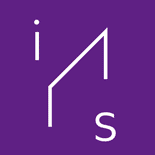Call for Papers of Youth Round Table | The First Annual Conference of Network Society “Forces of Reticulation”
Date:14-16th November, 2016
Organizer: The Institute of Network Society (INS), School of Inter- Media Art (SIMA) of China Academy of Art (CAA)
There is one question: which place has the highest rate of global Internet usage? Maybe a Western centric Internet map will automatically rise in front of you. However, this map, which is facilitated by the technology of submarine optical fiber, is only a one-sided statement claimed by western big multinational corporations. In February 2016, a research project that was initiated by the Internet Policy Observatory of University of Pennsylvania, the Journalism Library of the University of Missouri, and the School of Journalism and Communication of Chinese University of Hong Kong, revealed that the Web, when mapped based on its usage, does not have its core in the West, but is a mosaic of online regional cultures that associate with physical places. They analyzed traffic to the world’s most popular 1,000 websites – which consistently account for 99 percent of global Web traffic. The result showed that the Internet is becoming more decentralized, or to be more precise, de-Westernizing, as more users from disparate cultures are taking over its topography by bringing in their own cultural identities. Web witnessed a gradual process of “de-Americanization”. In other words, the global South has become the main part of the network culture. Non-Western online cultures have strengthened, especially those linked to Brazil, Russia, China and India.

The Internet as Global Usage: 2009 (left), 2011, 2013 (right). The dots are websites and the lines represent the existence of significant traffic overlap between them. These show that global Web usage clusters itself into many communities of websites based on shared traffic. What the member websites of these clusters have in common with each other allows us to identify them as expressions of online regional cultures (see legend).
These user-centric maps mentioned above challenge, rather than reinforce, the existing concept of an Internet anchored by Western knowledge and norms They encourage the (Anglophone, especially) general public to refresh their own preconceptions by exploring the vastly heterogeneous cyberspace.
Therefore, The First Annual Conference of Network Society themed “Forces of Reticulation” would take place during 14-16th November 2016 in China Academy of Art, Hangzhou, China. The Institute of Network Society INS will invite famous scholars from the United States, the United Kingdom, Germany, France, the Netherlands, Brazil as well as Asian and Pacific regions to attend the conference and present their latest research findings and thoughts on the Chinese network society. Scholars will mainly focus on four dimensions: aesthetics, ecology, materiality and algorithm to shed light on the different forms of network society created by the Internet of things, intelligent objects, social networks, big data analysis and other technologies in the present day.
Apart from the academic speeches, the conference will also include Youth Round Table Summit in the main forms of exchanging ideas and artistic practices. The fact that the WeChat has got up to 570 million users, Alipay becomes citizens’ daily economic tool and Mi Smart Band manages to become the most used item of wearable devices in China and the second in the world—it urges us to come up with new hypotheses and findings to challenge the existing network theories—because in fact, it will not even be possible to claim that there is a network theory when the research of Chinese network reality is excluded. The experiences and relevant researches are desperately needed, from both young scholars who grow up in the Chinese network environment and can provide with their own field observation and criticism, and young artists who can break through the boundary of theoretical phrases, bringing hope and creative destruction. This will be the first ever youth round table summit for network society in China—a first ever “digital nativism” bonfire party as well as an electronic ball for innovative exchanges and thought practices. Now all you need to do, is to pick a theme and dress up!
Hence, we initiate this call for papers fromall ambitious young people who live in China, Taiwan, Hong Kong and Macau. If you would submit a research paper, there will be no limit on the theme so longas it has to be an empirical study; if you are an artist, please focus on mediaart or network art. All work should be submitted before the midnight of 30th July 2016 to 308645611@qq.com including:
- a 500-word “Abstract” or “Introduction”with 3 pictures of final effect drawing
- a 200-word CV,either in Chinese or in English
- with the title “Paper for Round Table”
After the discussion of the organizing committee, the final results will be released in Mid August along with further details of deadline for papers, the conference and invitation letters for coming to Hangzhou. The selected scholars and artist are expected to complete their work before the deadline; otherwise the committee will cancel their qualifications. The content of the conference will be assembled in the full text for the official publication so that the latest findings and results can be widely spread. Should you have any questions, please do not hesitate to contact us via email (811196862@qq.com) .
